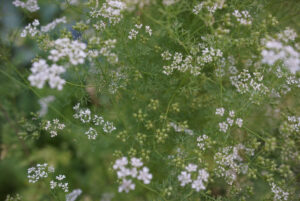
Introduction
Embarking on a culinary journey to discover fruits and vegetables starting with the letter “X” leads to a fascinating exploration of rare and exotic foods. While the options are limited compared to other letters of the alphabet, the few fruits and vegetables that bear names beginning with “X” offer unique flavors, textures, and cultural significance. In this article, we delve into the intriguing world of fruits and vegetables that start with “X”, highlighting their culinary uses and nutritional benefits.
Fruits That Start With X
- Xigua (Chinese watermelon): Originating from China, the Xigua is a type of watermelon with a sweet and juicy flesh. Its name translates to “watermelon” in Mandarin, and it is prized for its refreshing taste and high water content. While similar in appearance to traditional watermelons, Xiguas typically have a thinner rind and smaller seeds.
- Ximenia (wild plum): The Ximenia fruit, also known as the wild plum or sourplum, grows on the Ximenia americana tree native to Africa. It is small, round, and tart, with a flavor reminiscent of sour cherries. In some regions, Ximenia fruits are used to make jams, jellies, and sauces, or eaten fresh as a snack.
- Xylocarp (a fruit with a hard outer shell): The term “xylocarp” refers to any fruit with a hard outer shell or rind, such as coconuts or almonds. While not a specific fruit itself, xylocarps encompass a variety of fruits with protective outer coverings that encase the edible seeds or flesh within. Examples include coconuts, chestnuts, and durians.
Vegetables That Start With X
- Xanthosoma (taro root): Xanthosoma, also known as taro root or elephant ear, is a starchy tuber widely cultivated in tropical regions. It has a mild, nutty flavor and a creamy texture when cooked, making it a versatile ingredient in various cuisines. Xanthosoma is often boiled, mashed, or fried and used in dishes such as soups, stews, and savory snacks.
- Xoconostle (sour cactus fruit): The Xoconostle is a type of cactus fruit native to Mexico, known for its tart and tangy flavor. It resembles a small green pear and is commonly used in Mexican cuisine to add acidity to salsas, sauces, and beverages. Xoconostle fruits are rich in vitamin C and antioxidants, making them a nutritious addition to dishes.
- Xerophyte (plants adapted to arid climates): While not a specific vegetable, xerophytes encompass a group of plants adapted to survive in arid and drought-prone environments. Examples include cacti, succulents, and desert-adapted herbs such as rosemary and lavender. While not traditionally consumed as food, some xerophytes have culinary uses, such as aloe vera in beverages and agave nectar in sweeteners.
Culinary Uses and Nutritional Benefits
The fruits and vegetables starting with “X” offer unique culinary experiences and a range of nutritional benefits. Xigua and Ximenia fruits are prized for their refreshing flavors and can be enjoyed fresh or incorporated into various dishes. Xanthosoma and Xoconostle vegetables add depth and complexity to recipes, while xylocarps and xerophytes provide essential nutrients and adaptability to diverse cuisines.
Conclusion
Exploring fruits and vegetables that start with “X” opens up a world of culinary possibilities and cultural richness. From the sweet and juicy Xigua to the tart and tangy Xoconostle, each food offers a unique flavor profile and culinary heritage to discover and appreciate. While rare and uncommon, these “X” foods add diversity and excitement to the culinary landscape, inviting us to embrace new tastes and experiences in our gastronomic adventures.


